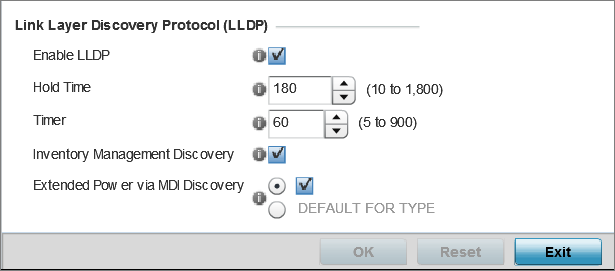The LLDP (Link Layer Discovery Protocol) provides a standard way for a controller or access point to advertise information about themselves to networked neighbors and store information they discover from their peers.
LLDP is neighbor discovery protocol that defines a method for network access devices using Ethernet connectivity to advertise information about them to peer devices on the same physical LAN and store information about the network. It allows a device to learn higher layer management and connection endpoint information from adjacent devices.
Using LLDP, an access point is able to advertise its own identification, capabilities and media-specific configuration information and learn the same information from connected peer devices.
LLDP information is sent in an Ethernet frame at a fixed interval. Each frame contains one m LLDP PDU(Link Layer Discovery Protocol Data Unit). A single LLDP PDU is transmitted in a single 802.3 Ethernet frame.
To override the access point profile's LLDP configuration:
The Device Overrides screen displays. This screen lists devices within the managed network.
The selected access point's configuration menu displays.
The LLDP configuration screen displays.

|
Hold Time |
Use the spinner control to set the hold time (in seconds) for transmitted LLDP PDUs. Set a value from 10 - 1,800. The default hold time is 180 seconds. |
|
Timer |
Set the interval used to transmit LLDP PDUs. Define an interval from 5 - 900 seconds. The default setting is 60 seconds. |
|
Inventory Management Discovery |
Select this option to include LLPD-MED inventory management discovery TLV in LLDP PDUs. This setting is enabled by default. |
|
Extended Power via MDI Discovery |
Select this option to include LLPD-MED (LLDP - Media Endpoint Discovery) extended power via MDI (Media Dependent Interface) discovery TLV in LLDP PDUs. This setting is disabled by default. |
Select Reset to revert to the last saved configuration.